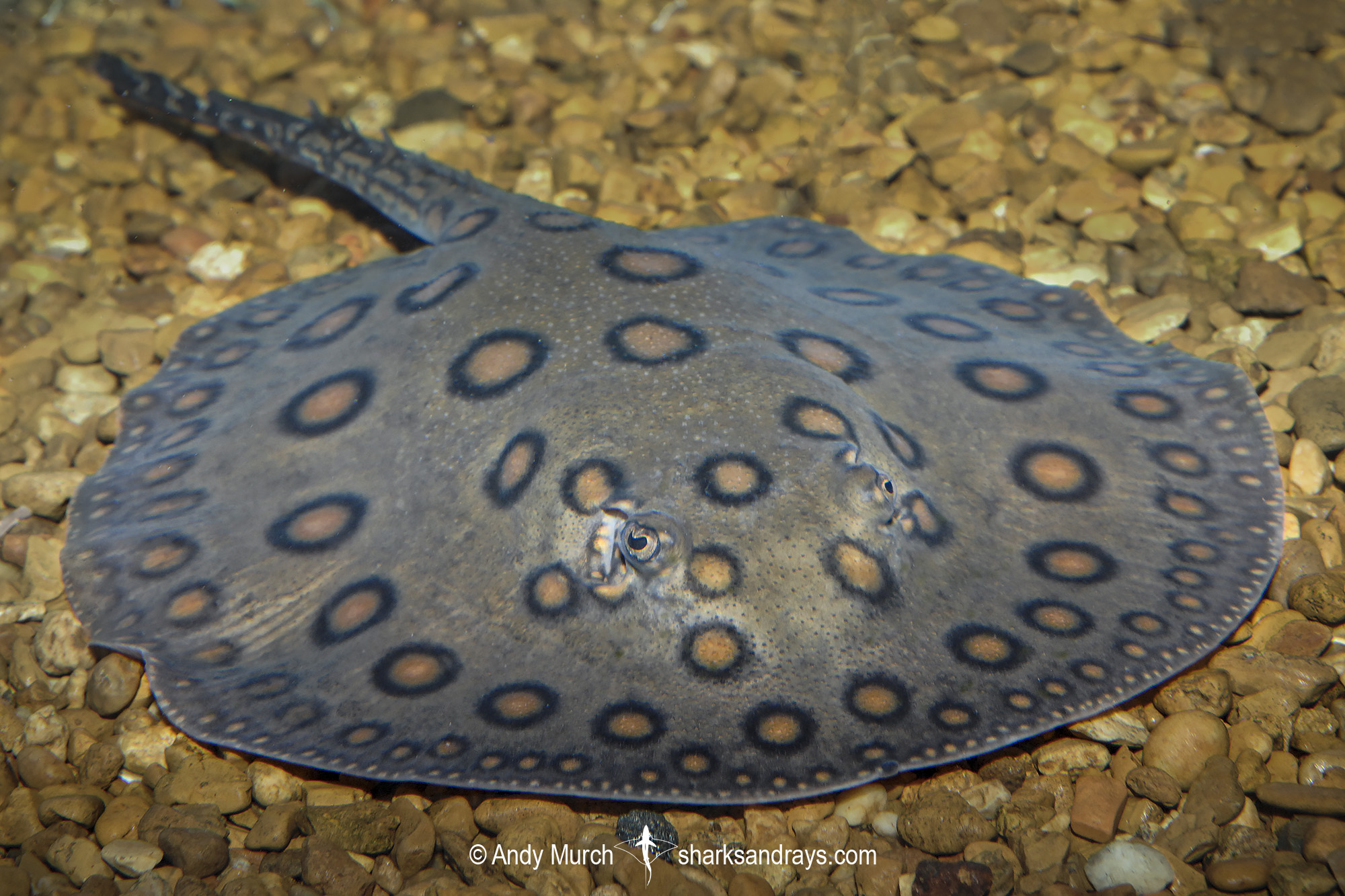Common names
Ocellate River Stingray, Peacock River Stingray, Motoro Ray, Amazon Freshwater Stingray.
Binomial
Potamotrygon motoro.
Synonyms
Taeniura motoro, Trygon garrapa, Trygon mulleri, Potamotrygon circularis, Potamotrygon pauckei, Potamotrygon labradori.
Identification
A medium-sized freshwater stingray with a thick sub-circular disc that is slightly longer than wide. Very small lobe on tip of snout. Head rather wide. Eyes bulging. Spiracles large. Nostrils thin. Nasal curtain skirt-shaped. Mouth relatively wide with 5 oral papillae.
Disc covered with star-shaped denticles; more densely grouped towards mid-disc. Pelvic fin posterior margins slightly posterior to, or level with disc. Tail broad, shorter than disc width, with low dorsal/ventral finfolds. 1 row of tall, upright thorns dorsally between disc insertion and caudal sting. Irregular row of small, low lateral thorns on each side of tail. Caudal sting origin posterior to midpoint of tail.
Colour
Dorsum light brown, olive-grey, dark brown or black with vivid, orange spots with yellow or white centres and black outer rings. Spots occasionally indistinct. Spots much smaller near disc margin. Ventrum off white or yellowish, usually with a dusky or brown margin, sometimes with small dark spots.
Size
Maximum disc width 48cm. Disc width at birth approximately 10cm.

Conservation Status
DATA DEFICIENT
Artisanal and commercial fishermen target all freshwater stingrays that live in this region, and juveniles are collected for the ornamental fish trade.
Combined with habitat degradation caused by the damming of rivers, mining, deforestation, and farming run off, there have probably been significant declines in all Potamotrygonid species.

Habitat
Tropical freshwater river systems. Favours slow moving water, sandy lagoon edges, brooks, and streams.
Distribution
South America. The ocellate river stingray is currently considered the most widespread species of neotropical freshwater ray, occurring in many river systems including the Rio Paraná, (middle and lower reaches), Río Uruguay (middle), Río de la Plata, Río Pilcomayo, Río Bermejo, Río Guapore, Río Negro, Río Branco, Río de Janeiro and Río Paraguay. However, recent splits in the P.motoro complex and the description of a number of new species may imply that P. motoro actually has a smaller range than previously thought.
Reproduction
Viviparous with trophodermic nutrition. Up to 11 pups per litter but usually 2-4. Litter size varies by region.
Diet
Diet consists of insects (especially mayflys and other flies), crustaceans, and small fishes.
Behavior
Buries during the warmest part of the day.
Reaction to divers
Somewhat difficult to approach. Will bolt if approached too closely.
Diving logistics
The ocellate river stingray can be encountered in numerous spots, but the clear water of the Rio Salobra in the Pantanal is an excellent spot to encounter this ray.
Apparently, some sections of the Rio Sucuri are also good places to see this species.
What’s new
View our full list of updates
Similar species
Suriname Freshwater Stingray Similarly patterned but distinguishable by a darker dorsum with deep orange spots encircled by much thicker black rings.



















